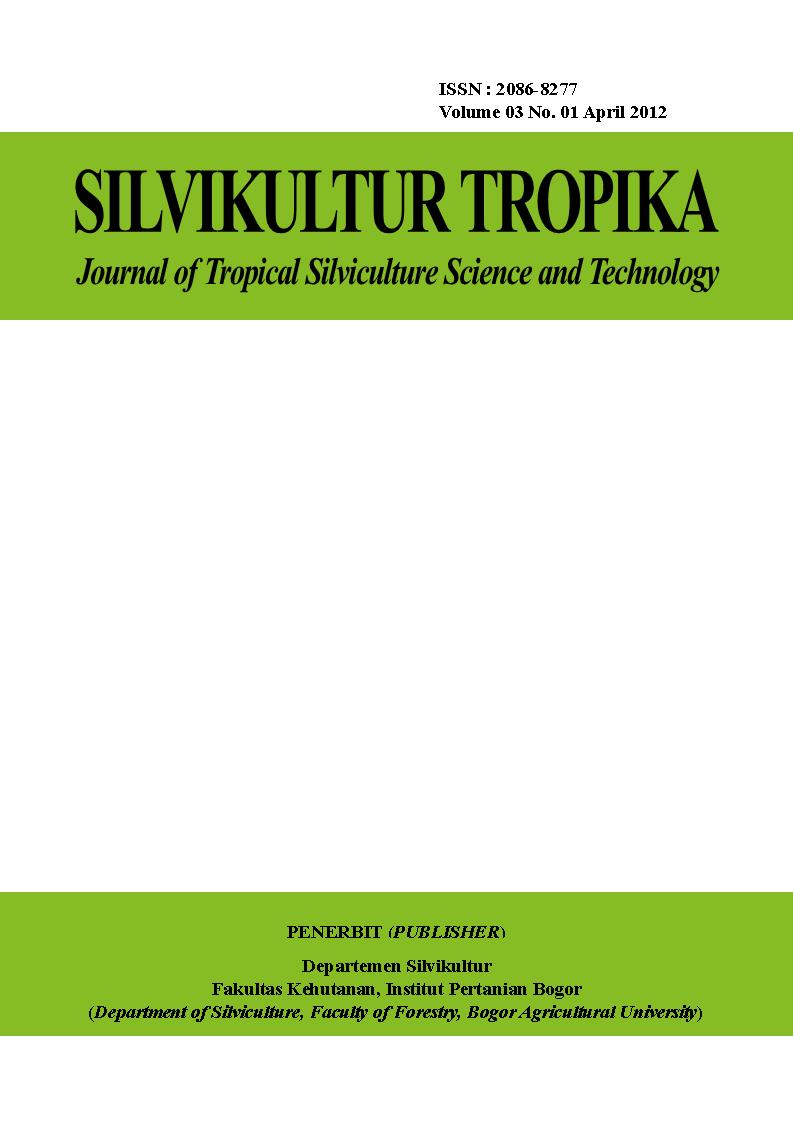Kuantitas dan Kualitas Kecambah Sengon pada Beberapa Tingkat Viabilitas Benih dan Inokulasi Rhizoctonia sp.
Abstract
Quantity and Quality of Sengon Sprouts at Some Levels of Seed Viability and Rhizoctonia sp. Inoculation
The purpose of this research was to evaluate the quantity and quality of sengon sprouts with several levels of seed viability and inoculation of Rhizoctonia sp. Materials used was three lots of sengon seed with different levels of viability obtained from Forest Management Unit Pare - Kediri and Rhizoctonia sp. isolate cultured on PDA media. The treatments tested were 3 levels of seed viability and 4 levels of Rhizoctonia sp. inoculum. The results showed that seeds with higher viability levels (seed germination = SG 87 and 83 %) produce more sprouts, indicated by the germination percentage which was significantly higher than that of seeds with lower viability. Rhizoctonia sp. inoculation decreased the number of sprouts, indicated by the germination percentage which was significantly lower. The attacked of Rhizoctonia sp. on sengon sprouts was not associated with the level of seed viability, the lowest inoculum levels (3 corkborer 10-1 ml media) caused high percentage of seedlings death (57%) even at the seed with high level of viability (SG 87%). The quality of the sprouts were not influenced by the level of seed viability, indicated by the length of roots and hyphocotil of normal sprouts which was not significantly different of sprouts from the seed with higher viability level (SG 87%, root length 2,71 cm, hypocotile length 3,00 cm) than that of the seed with lower viability level (SG 56%, root length 2,38 cm, hypocotile length 2,66 cm).










